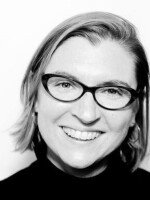ARI SHAPIRO, HOST:
As the solar eclipse reached totality on Monday, observers below its path put on protective lenses and looked up at the sky while astronomer Wanda Diaz-Merced sat in her university office in Puerto Rico listening.
WANDA DIAZ-MERCED: I didn't have to go to the natural phenomena. The natural phenomena came to me inside the room.
AILSA CHANG, HOST:
Diaz-Merced experienced the solar eclipse through a device called LightSound, which she helped create. It captures light data and converts it into audio for those with low vision or those who are completely blind, like she is.
SHAPIRO: Diaz-Merced lost her vision when she was in her early 20s, so she decided to dedicate her career to sonification - a technique that emerged in the late 1800s but had since been abandoned in mainstream astronomy research.
CHANG: She and a colleague developed a prototype for LightSound seven years ago. And for this week's eclipse, more than 750 of these devices were sent out for free to watch parties across the path of totality.
DIAZ-MERCED: When it's detecting brightness, you hear tones - higher tones or lower tones depending on how bright. And from the sun, what you hear is ticking sounds.
(SOUNDBITE OF LIGHTSOUND TICKING QUICKLY)
DIAZ-MERCED: First they were faster...
(SOUNDBITE OF LIGHTSOUND TICKING QUICKLY)
DIAZ-MERCED: ...Then slower...
(SOUNDBITE OF LIGHTSOUND TICKING SLOWLY)
DIAZ-MERCED: ...And then almost no ticking sound.
(SOUNDBITE OF LIGHTSOUND TICKING VERY SLOWLY)
DIAZ-MERCED: And then they - the ticking sounds became faster and faster and faster and faster and faster and faster, and then the tones kicked in.
(SOUNDBITE OF LIGHTSOUND TONES)
SHAPIRO: Diaz-Merced says listening to Monday's eclipse was a full-body sensory experience.
DIAZ-MERCED: I could feel the increment of the sound as if my body would have been waving with it.
CHANG: But that experience didn't include imagining what the sky looks like - what other people were seeing.
DIAZ-MERCED: I was sighted before, but I've been blind for so many years that, nowadays, I do not create an image in my head. I grab what I feel from the sound.
SHAPIRO: Diaz-Merced says sonification and devices like LightSound expand the kind of data astronomers can access because not everything up in the sky can be seen with the naked eye. She believes this technology will revolutionize the field of astronomy, including for her young students who are blind.
DIAZ-MERCED: For them to believe, for them to trust that science can emerge from it - so in that way, opening doors so my children can get into the field and decide, based on interest, what they want to do.
CHANG: I so can't wait to find out what the next eclipse sounds like.
(SOUNDBITE OF CURREN$Y AND STATIK SELEKTAH SONG, "GRAN TURISMO (FEAT. TERMANOLOGY)") Transcript provided by NPR, Copyright NPR.
NPR transcripts are created on a rush deadline by an NPR contractor. This text may not be in its final form and may be updated or revised in the future. Accuracy and availability may vary. The authoritative record of NPR’s programming is the audio record.






